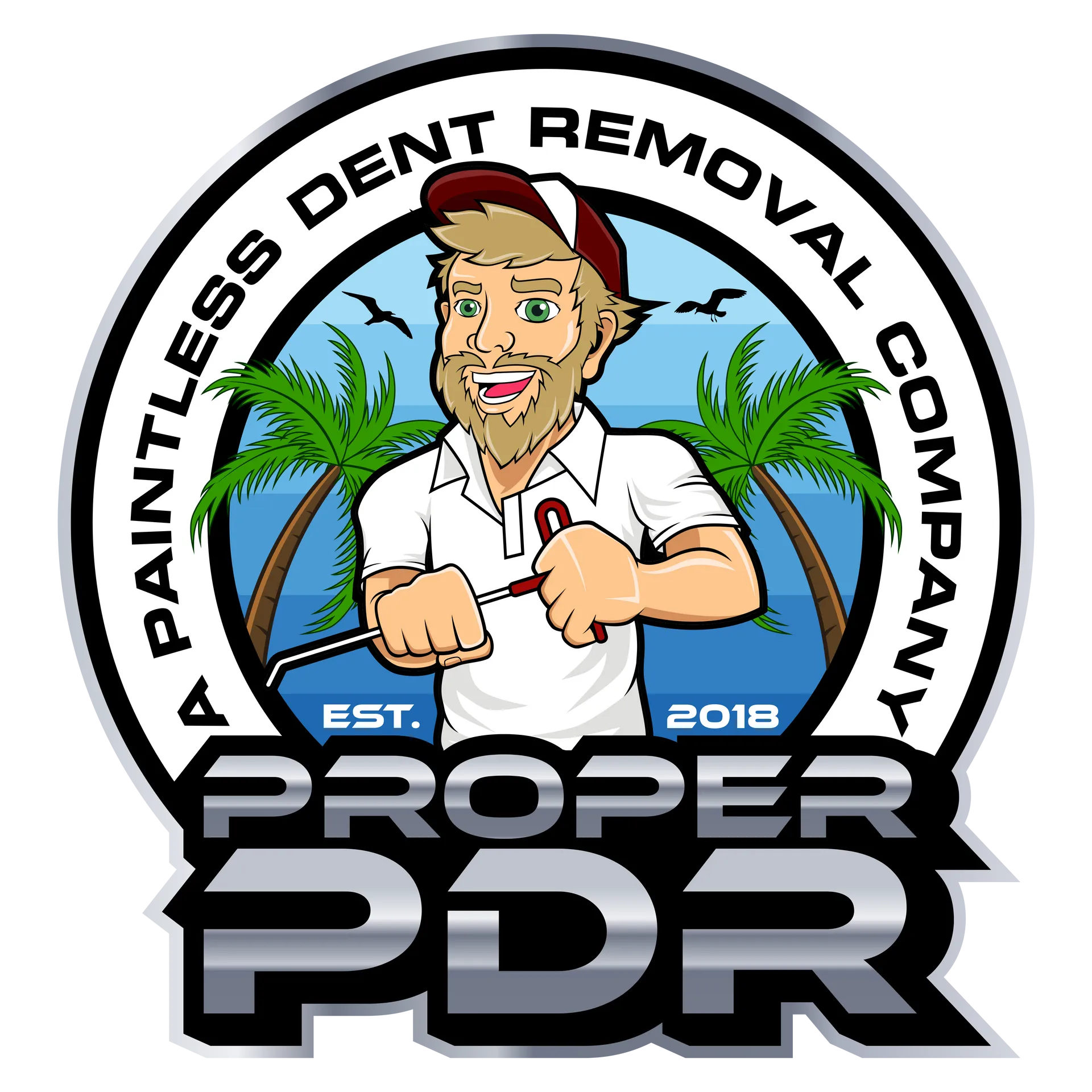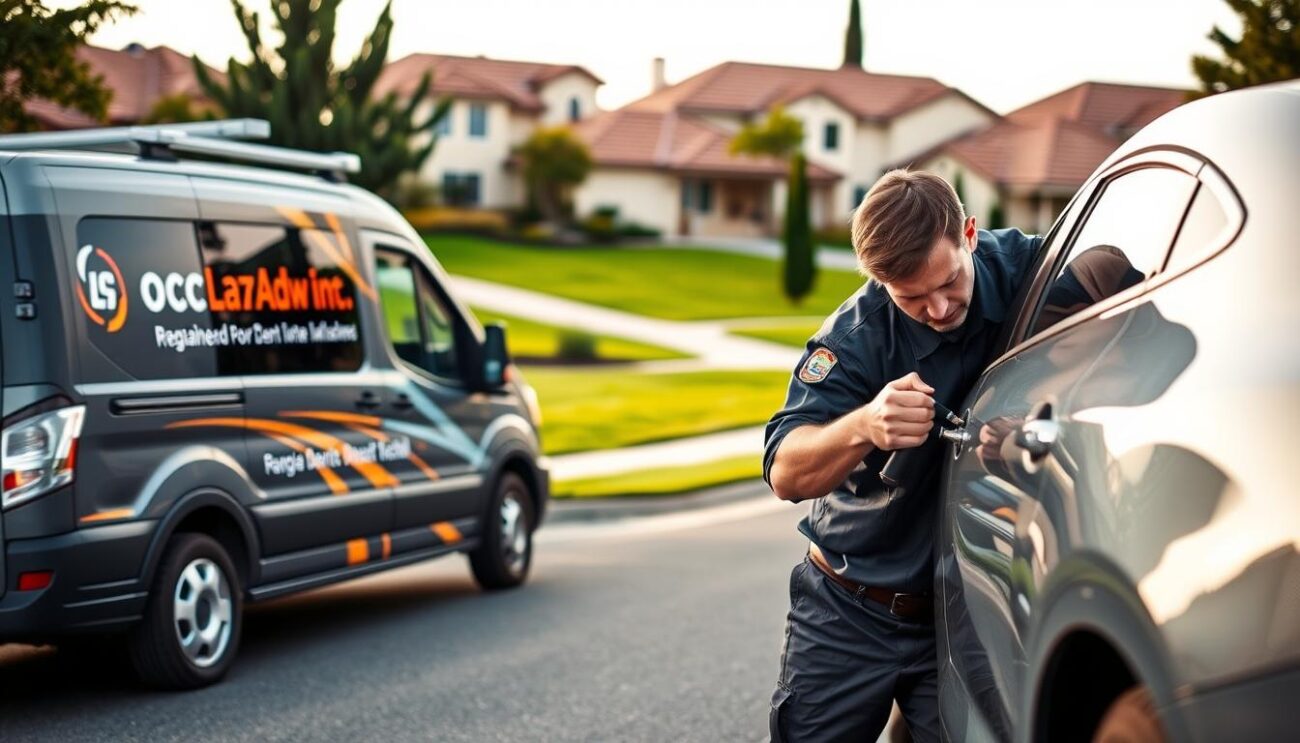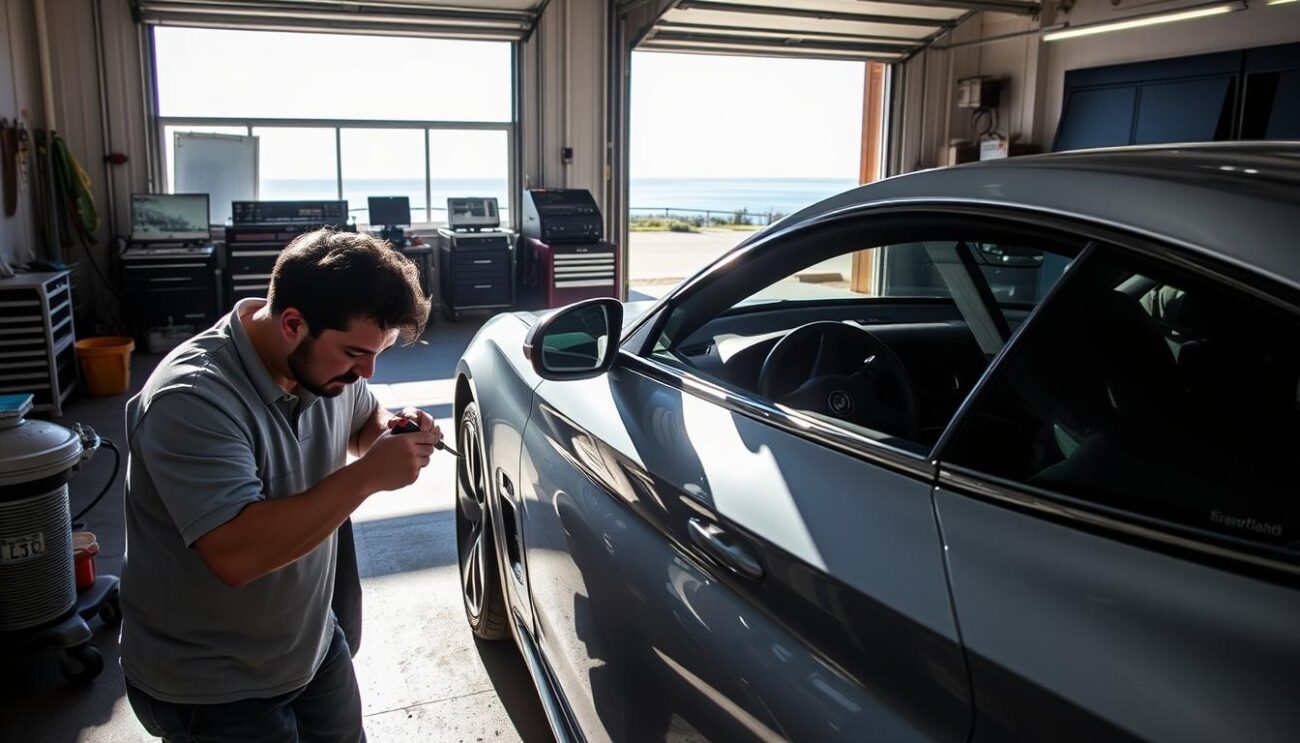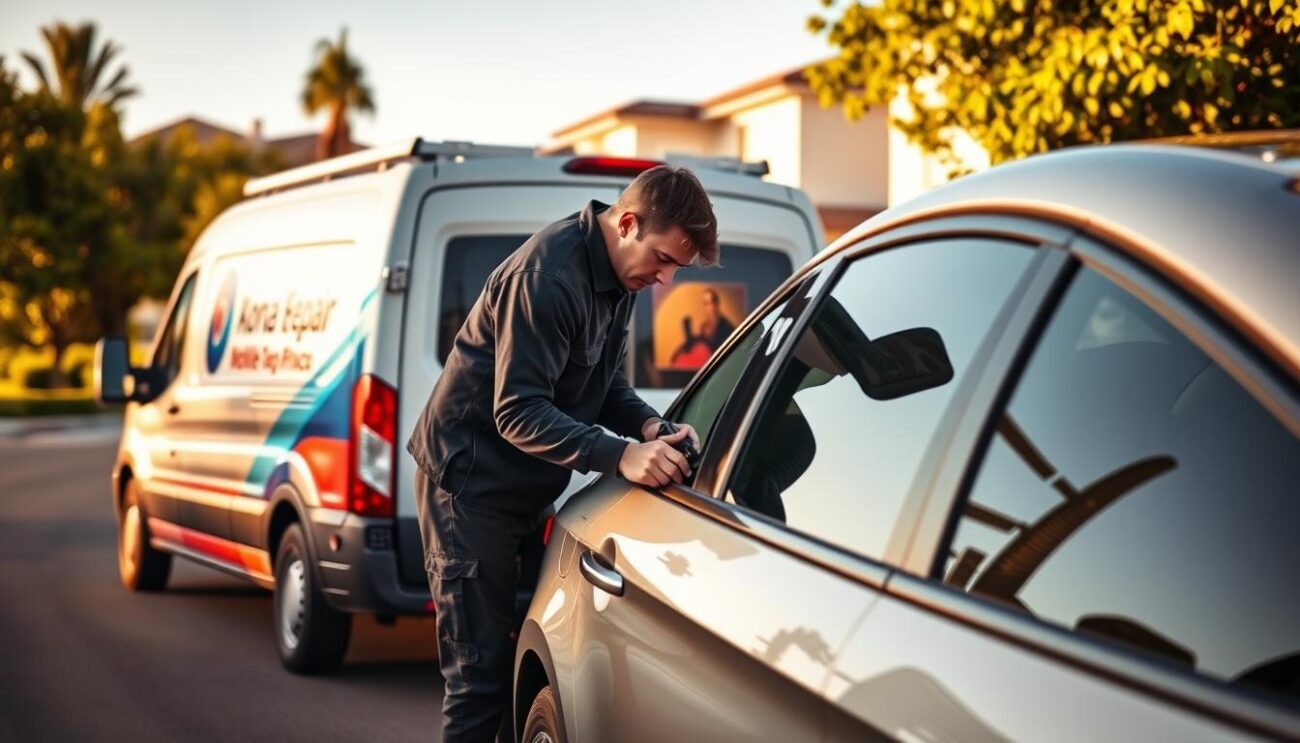
Blog
Can PDR Fix Hail Damage? Here’s What You Need to Know
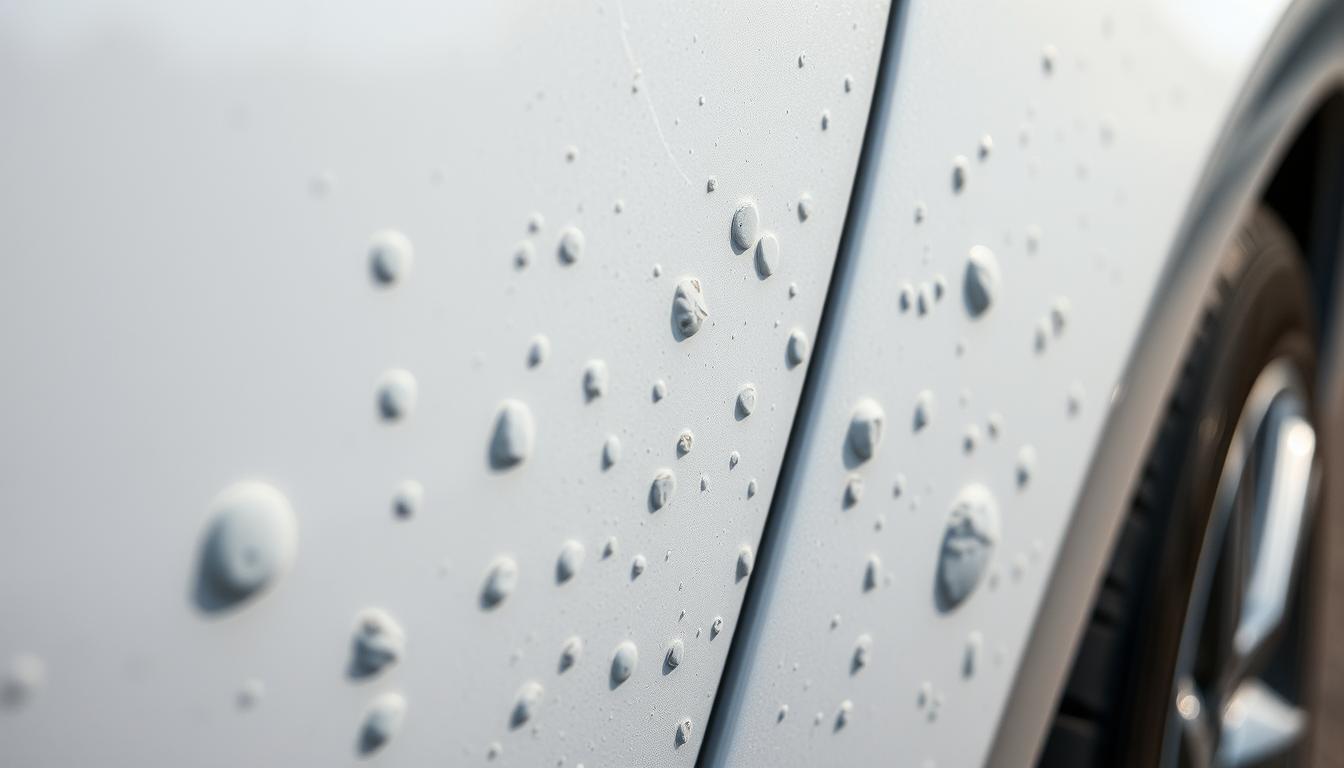
Dealing with a vehicle covered in dents after a storm can feel overwhelming. Traditional repair methods often involve high costs, lengthy timelines, and invasive techniques that alter your car’s original appearance. But there’s good news: modern solutions exist that prioritize both efficiency and quality.
Paintless dent repair is a game-changer for restoring sheet metal without fillers or repainting. This method uses specialized tools to gently massage dents from behind the panel, preserving the factory finish. Since hail impacts rarely crack paint, this approach is ideal for addressing clusters of shallow dents quickly.
This guide breaks down how advanced techniques can tackle weather-related imperfections. You’ll learn why this process works best for minor to moderate cosmetic issues, how it compares to conventional bodywork, and what factors determine success. Industry experts share insights to help you navigate repair options confidently.
By understanding the science behind these methods, you’ll discover a smarter way to maintain your vehicle’s value and appearance. Let’s explore how innovative strategies turn frustration into relief—without emptying your wallet.
Understanding Hail Damage and the PDR Process
When icy projectiles fall from the sky, they leave a unique signature on your vehicle’s surface. Unlike scratches from branches or dings from shopping carts, storm-related imperfections have distinct patterns shaped by nature’s force.
What Causes Hail Damage on Vehicles
Falling ice chunks create dents through sheer kinetic energy. Larger pellets—like golf balls—pack more punch, especially when wind speeds exceed 60 mph. These impacts leave shallow, circular depressions rather than sharp creases. Since most hailstones lack jagged edges, they rarely chip or crack factory coatings.
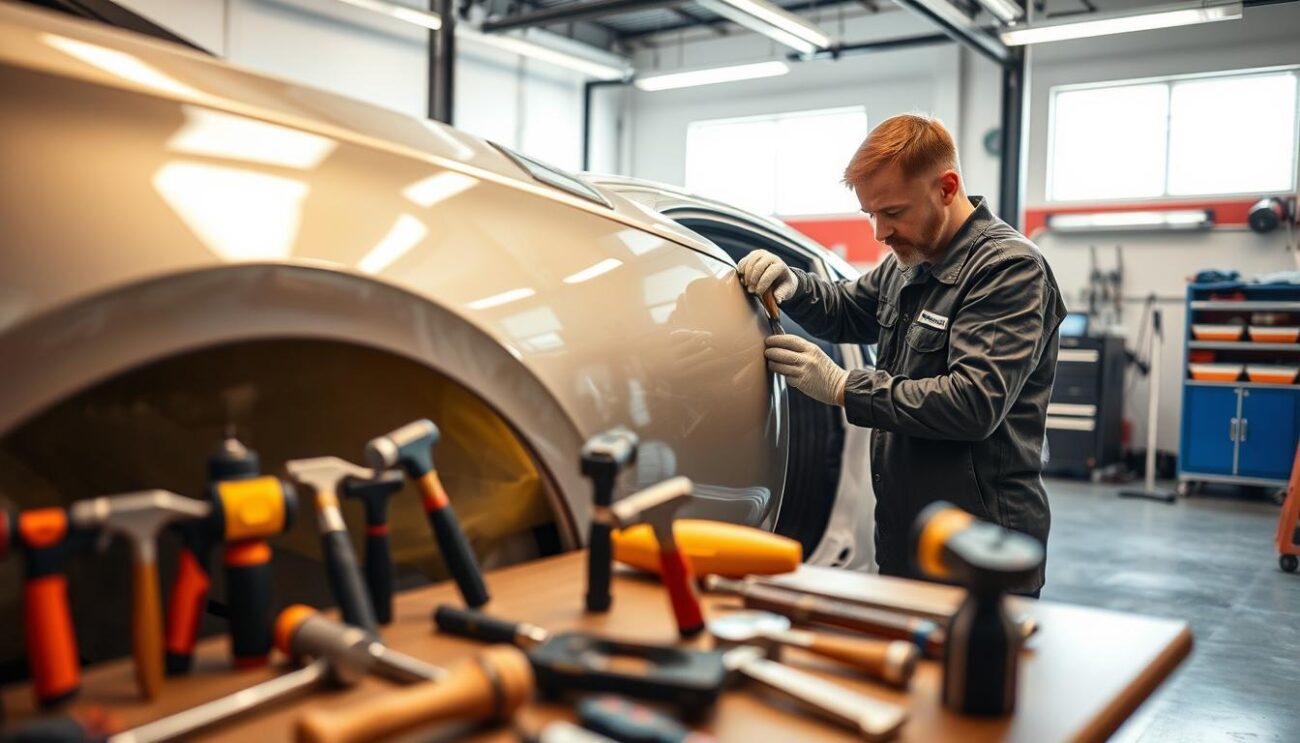
- Pellet size: Marble-sized ice causes minor dimples
- Impact angle: Wind-driven hail strikes with greater force
- Material thickness: Thinner roof panels dent more easily
An Overview of Paintless Dent Repair
This technique reverses storm damage without sanding or spraying. Technicians use precision rods to push metal from behind panels, guided by reflection boards that reveal every contour. The process works best on rounded depressions with intact paint—exactly what most hailstorms produce.
| Hail Damage vs. Collision Damage | Paintless Repair | Traditional Repair |
|---|---|---|
| Paint Condition | Intact | Requires repainting |
| Dent Shape | Round, shallow | Sharp, deep |
| Cost | $75-$150 per dent | $500+ per panel |
Skilled technicians can restore a hood full of dents in hours instead of days. This approach maintains your factory finish while avoiding filler materials that might shrink or crack over time.
Steps Involved in the PDR Method
Modern auto restoration combines technical skill with artistic precision. Specialists follow a meticulous process to reverse weather-related imperfections while preserving original finishes. Let’s explore how experts transform dimpled surfaces back to showroom condition.
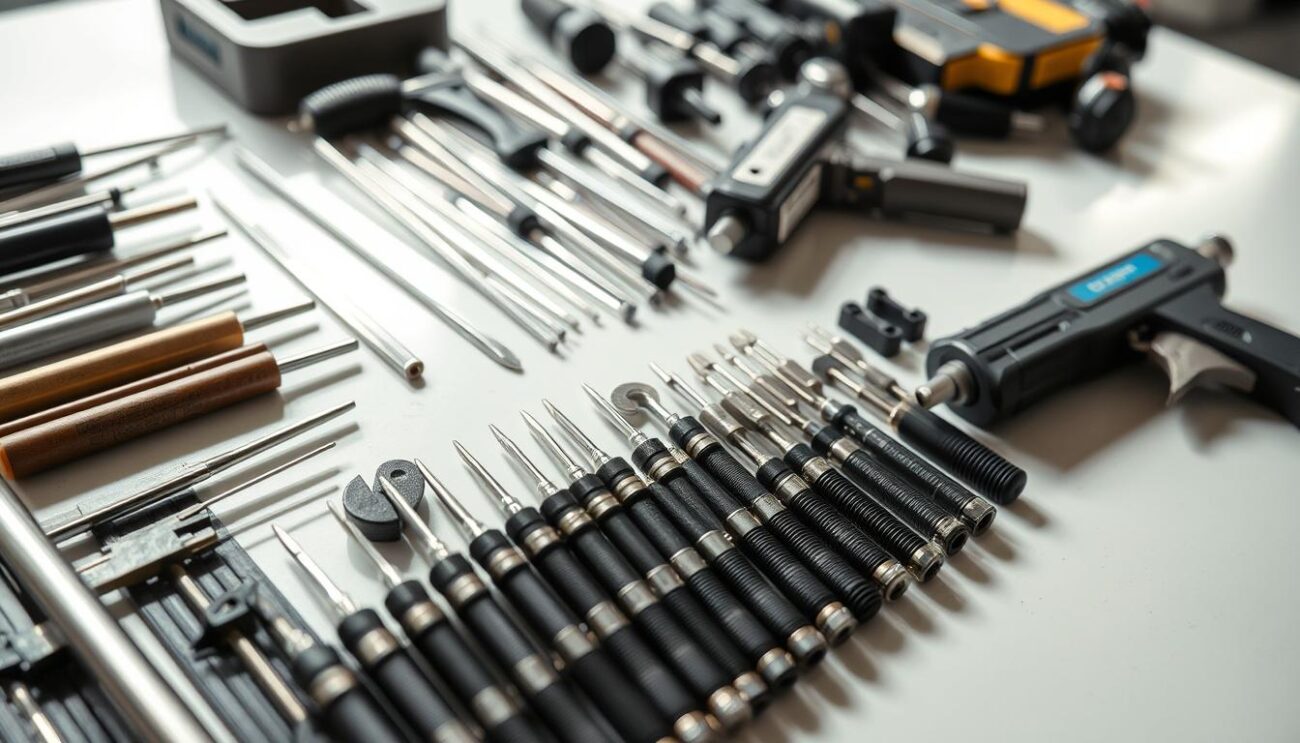
Preparing and Assessing the Damage
Technicians begin with a thorough evaluation using LED lighting and reflection boards. These tools reveal every depression’s depth and edges. They classify issues into three categories:
- Minor: Quarter-sized marks with intact coatings
- Moderate: Larger indentations needing strategic access
- Complex: Creased areas requiring advanced solutions
Cleaning surfaces comes next—dust-free panels prevent scratches during treatment. Some jobs demand removing door cards or headliners to reach behind sheet metal.
Techniques for Massaging Metal Back into Shape
Skilled hands use custom rods to apply targeted pressure from underneath panels. A rhythmic tapping motion gradually coaxes molecules into their original positions. For hard-to-reach spots, technicians employ glue tabs and pull systems that lift dents outward.
Final quality checks involve multiple light angles to spot hidden flaws. This attention to detail ensures surfaces look untouched—no filler residues or color mismatches. The entire approach prioritizes preserving factory coatings while restoring structural integrity.
Can PDR Fix Hail Damage? Here’s What You Need to Know
Automotive specialists agree this technique successfully addresses storm-induced imperfections in most cases. Success depends on three critical factors: dent depth, paint integrity, and metal memory. Shallow depressions with smooth edges respond best to precision correction methods.
Expert Insights on Repairing Dents Without Repainting
Technicians achieve optimal outcomes on circular marks smaller than 3 inches. These typically appear on horizontal surfaces like hoods and roofs after severe weather. Metal panels retain enough flexibility for reshaping when imperfections haven’t created sharp creases.
Preserving factory-applied coatings matters significantly for long-term value. Original finishes undergo rigorous baking processes that aftermarket solutions can’t replicate. This makes color matching unnecessary and prevents future peeling issues common with repainted areas.
| Ideal Scenarios | Challenging Cases | Alternative Solutions |
|---|---|---|
| Dents under 1.5″ diameter | Deep creases exceeding 0.5″ depth | Body filler applications |
| Smooth, rounded edges | Cracked or chipped coatings | Panel replacement |
| Original coating intact | Multiple overlapping impacts | Custom paint blending |
Professionals recommend inspecting damage under bright lighting. Run your fingertips across the surface—if transitions feel gradual rather than abrupt, non-invasive methods likely work. Deep scratches or spider-web cracks in clear coat signal the need for conventional approaches.
Industry studies show 85% of weather-related imperfections get fully corrected through specialized metal manipulation. Vehicles treated this way retain 97% of their pre-damage resale value compared to 78% for those with repainted panels.
Benefits of Using PDR Over Traditional Repairs
Choosing the right repair method impacts your wallet and schedule. Advanced techniques now deliver better results than old-school approaches. Let’s explore why many prefer modern solutions for weather-related imperfections.
Cost and Time Efficiency
Specialized dent correction typically costs 30-50% less than conventional methods. A single door panel repair might run $75 instead of $200. For extensive storm damage, savings climb higher—$3,000 versus $6,000 for full-body work.
Time differences surprise most owners. Many jobs finish in hours, not weeks. Mechanics complete multiple dents during a lunch break. Traditional shops need days for sanding, painting, and drying.
| Factor | Modern Approach | Conventional Method |
|---|---|---|
| Average Cost | $50-$150 per dent | $200-$500 per panel |
| Repair Duration | 2-6 hours | 3-7 days |
| Paint Alteration | None | Required |
Preserving Original Paint and Vehicle Value
Factory coatings withstand weathering better than resprays. Original finishes maintain consistent color across panels. This matters when selling—buyers pay 15-20% more for unaltered exteriors.
Other advantages include:
- Environmental care: No toxic chemicals or overspray
- Convenience: Keep your vehicle during repairs
- Longevity: Lifetime warranties on craftsmanship
Maintaining structural integrity boosts confidence. Your car retains its authentic look while avoiding filler materials that degrade over time. Smart repairs protect both appearance and investment.
DIY Repairs vs. Professional PDR Services
Many vehicle owners try home solutions when facing cosmetic issues. While creative approaches seem tempting, automotive restoration requires specialized knowledge most people lack.
Why Amateur Repairs Often Backfire
Common DIY methods like heating panels with hair dryers or using dry ice create temperature shocks. These techniques aim to pop out car dents through rapid expansion and contraction. Other approaches involve suction cups or glue kits that pull metal outward.
Unfortunately, untrained hands often stretch sheet metal beyond repair. Excessive force cracks paint or creates sharp creases. What started as minor dimples might now require full panel replacement—tripling repair costs.
Insurance providers rarely cover botched amateur damage repair attempts. Policies exclude reimbursement for tools like slide hammers or heat guns. You could pay out-of-pocket to fix new flaws caused by well-meaning efforts.
| DIY Approach | Professional Solution |
|---|---|
| Unpredictable results | Guaranteed outcomes |
| No warranties | Lifetime craftsmanship coverage |
| Potential paint damage | Original finish preserved |
Certified technicians spot hidden issues like weakened metal or structural stress points. Their precision tools address multiple car dents simultaneously without compromising surfaces. While DIY work might save money initially, professionals prevent costly mistakes that escalate expenses over time.
Conclusion
Navigating post-storm vehicle restoration requires smart solutions that balance quality and practicality. Paintless dent repair stands out as the go-to approach for weather-related imperfections when factory coatings remain undamaged. This technique resolves most shallow dents faster than traditional methods while protecting your car’s resale value.
Major benefits include saving 30-50% on costs compared to body shop work and completing repairs in hours instead of days. Certified technicians—like those at Chicago’s E-Z Tech since 2016—use specialized tools to restore metal without compromising original finishes. Their expertise prevents common DIY pitfalls like stretched panels or cracked clear coats.
While this method works wonders for circular depressions, deep creases or chipped surfaces may need conventional approaches. Always consult professionals first—experts like 48-Hour Auto Hail Repair, who fixed over 1.1 million dents in 2022, provide accurate assessments. They’ll clarify whether your vehicle qualifies for non-invasive correction or requires alternative solutions.
For optimal outcomes, contact local specialists promptly after storms. Early action prevents secondary issues and ensures the best possible results for your car’s appearance. Trusting skilled hands guarantees peace of mind and preserves your investment for years ahead.
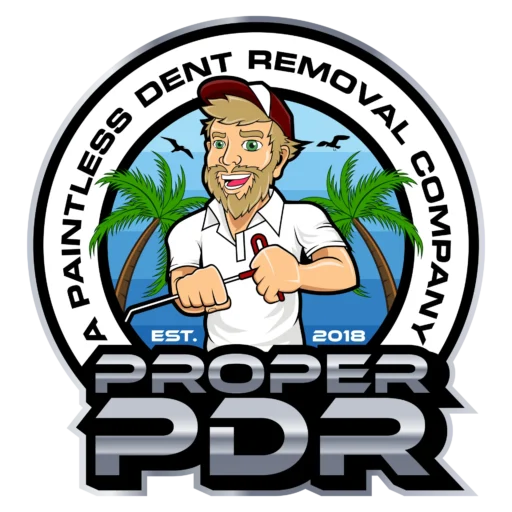
At Proper PDR specializes in mobile Paintless Dent Repair (PDR) and Paintless Dent Removal in Irvine, Trabuco Canyon, Newport Beach, Laguna Niguel, Aliso Viejo, and Dana Point. With years of experience, we ensure every dent is meticulously removed while preserving your vehicle’s factory finish. Trust Proper PDR for top-tier dent repair and exceptional service.
